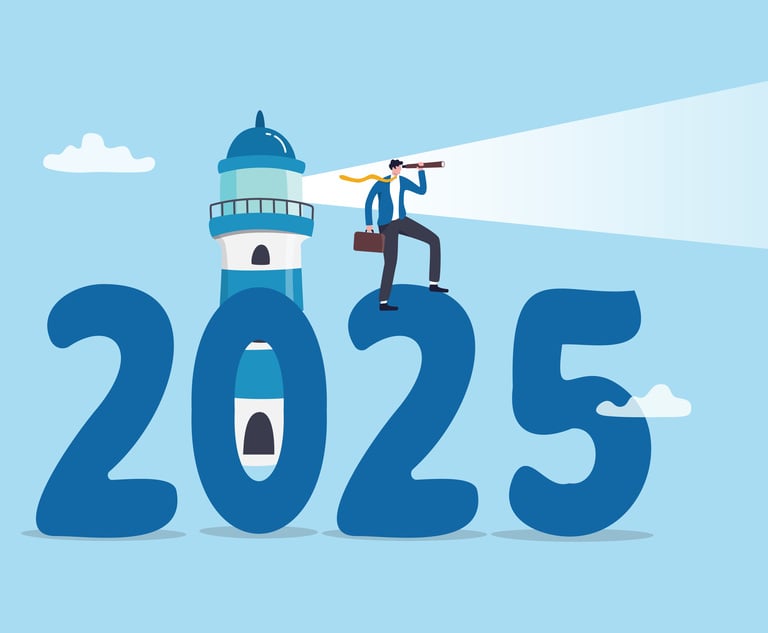 U.S. Supreme Court building. shutterstock.com
U.S. Supreme Court building. shutterstock.comCameras at SCOTUS: Long Overdue
We once again urge that the U.S. Supreme Court televise its public proceedings so that they may be actually, as opposed to nominally, public.
January 19, 2020 at 09:00 AM
4 minute read
In his recent year-end state of the federal judiciary report, Chief Justice John Roberts spoke of the role the courts play in educating the public. He praised programs in which students visit courthouses and observe the proceedings. Conspicuously absent however from the report was any comment on the ability of the public to observe oral arguments before the Supreme Court of the United States. Cameras in that courtroom have always been and continue to be forbidden.
We have repeatedly urged that the court allow its proceedings to be televised. We know of no good reason for the prohibition. Some justices have been quoted as expressing the concern that cameras might encourage "grandstanding" by lawyers or even their colleagues. Experience of televised proceedings in other trial and appellate courts has shown that not to be the case. Within a few minutes, participants forget the camera eye and focus on their important business at hand.
Of more concern is the argument that snippets of argument will be broadcast out of context or edited misleadingly. We cannot blithely assume that making video of oral argument available will elevate the standard of public discourse or further understanding of the court's work. It is not as if the arguments will only be broadcast verbatim on C-SPAN to sophisticated viewers who can follow them in detail. Quite the contrary, in this age of social media, when video footage is just raw material for cunning editors, we can look forward with trepidation to memes of "Justice X's Greatest Putdowns" or "Justice Y Zones Out" or "Justice Z: Enemy of American Values." And because so many of our fellow citizens get their information about public affairs through pictures rather than the written word, this kind of material could do far more harm to the court as an institution than even the most abusive written criticism.
It is true that many appellate courts, including New Jersey's Supreme Court, have long permitted cameras without harm. But the United States Supreme Court is different in kind, not merely degree, from all other American courts. It is a high-profile political institution. Its decisions have transformed American life and will again. Regardless of whether they would prefer to be known and judged simply for their written work product, its justices are politically controversial public figures to a degree unknown to the judges of more obscure tribunals. The incentive for partisan or merely snarky misuse of video material is much greater than for other courts. And because of the nature of many issues that the court considers, the incentive for advocates to appeal over the justices' heads to the audience is also greater.
Regardless of these qualms, however, we strongly favor televising the Supreme Court's oral arguments. Precisely because it is a political institution like no other court, the public deserves to see and make its own mind up about what can now only be viewed by a few hundred spectators in person. For better or worse, television is where most modern Americans get their information about what goes on in the wider world. If video footage is abused, it will be the same abuse that is suffered by all other figures of public authority in 21st century American democracy. Ultimately, the people will judge the court, and no one, however wise, can be trusted to say that they are incapable of doing so and should be denied the information they need. As we have in the past, we once again urge that the court televise its public proceedings so that they may be actually, as opposed to nominally, public.
This content has been archived. It is available through our partners, LexisNexis® and Bloomberg Law.
To view this content, please continue to their sites.
Not a Lexis Subscriber?
Subscribe Now
Not a Bloomberg Law Subscriber?
Subscribe Now
NOT FOR REPRINT
© 2024 ALM Global, LLC, All Rights Reserved. Request academic re-use from www.copyright.com. All other uses, submit a request to [email protected]. For more information visit Asset & Logo Licensing.
You Might Like
View All

Amazon's Audible Hit With Privacy Class Action Over Use of Tracking Pixels


TikTok Hit With Class Action Claiming It Circumvented Age Verification Measures and Monetized Children's Data
4 minute readTrending Stories
- 1The Key Moves in the Reshuffling German Legal Market as 2025 Dawns
- 2Social Media Celebrities Clash in $100M Lawsuit
- 3Federal Judge Sets 2026 Admiralty Bench Trial in Baltimore Bridge Collapse Litigation
- 4Trump Media Accuses Purchaser Rep of Extortion, Harassment After Merger
- 5Judge Slashes $2M in Punitive Damages in Sober-Living Harassment Case
Who Got The Work
Michael G. Bongiorno, Andrew Scott Dulberg and Elizabeth E. Driscoll from Wilmer Cutler Pickering Hale and Dorr have stepped in to represent Symbotic Inc., an A.I.-enabled technology platform that focuses on increasing supply chain efficiency, and other defendants in a pending shareholder derivative lawsuit. The case, filed Oct. 2 in Massachusetts District Court by the Brown Law Firm on behalf of Stephen Austen, accuses certain officers and directors of misleading investors in regard to Symbotic's potential for margin growth by failing to disclose that the company was not equipped to timely deploy its systems or manage expenses through project delays. The case, assigned to U.S. District Judge Nathaniel M. Gorton, is 1:24-cv-12522, Austen v. Cohen et al.
Who Got The Work
Edmund Polubinski and Marie Killmond of Davis Polk & Wardwell have entered appearances for data platform software development company MongoDB and other defendants in a pending shareholder derivative lawsuit. The action, filed Oct. 7 in New York Southern District Court by the Brown Law Firm, accuses the company's directors and/or officers of falsely expressing confidence in the company’s restructuring of its sales incentive plan and downplaying the severity of decreases in its upfront commitments. The case is 1:24-cv-07594, Roy v. Ittycheria et al.
Who Got The Work
Amy O. Bruchs and Kurt F. Ellison of Michael Best & Friedrich have entered appearances for Epic Systems Corp. in a pending employment discrimination lawsuit. The suit was filed Sept. 7 in Wisconsin Western District Court by Levine Eisberner LLC and Siri & Glimstad on behalf of a project manager who claims that he was wrongfully terminated after applying for a religious exemption to the defendant's COVID-19 vaccine mandate. The case, assigned to U.S. Magistrate Judge Anita Marie Boor, is 3:24-cv-00630, Secker, Nathan v. Epic Systems Corporation.
Who Got The Work
David X. Sullivan, Thomas J. Finn and Gregory A. Hall from McCarter & English have entered appearances for Sunrun Installation Services in a pending civil rights lawsuit. The complaint was filed Sept. 4 in Connecticut District Court by attorney Robert M. Berke on behalf of former employee George Edward Steins, who was arrested and charged with employing an unregistered home improvement salesperson. The complaint alleges that had Sunrun informed the Connecticut Department of Consumer Protection that the plaintiff's employment had ended in 2017 and that he no longer held Sunrun's home improvement contractor license, he would not have been hit with charges, which were dismissed in May 2024. The case, assigned to U.S. District Judge Jeffrey A. Meyer, is 3:24-cv-01423, Steins v. Sunrun, Inc. et al.
Who Got The Work
Greenberg Traurig shareholder Joshua L. Raskin has entered an appearance for boohoo.com UK Ltd. in a pending patent infringement lawsuit. The suit, filed Sept. 3 in Texas Eastern District Court by Rozier Hardt McDonough on behalf of Alto Dynamics, asserts five patents related to an online shopping platform. The case, assigned to U.S. District Judge Rodney Gilstrap, is 2:24-cv-00719, Alto Dynamics, LLC v. boohoo.com UK Limited.
Featured Firms
Law Offices of Gary Martin Hays & Associates, P.C.
(470) 294-1674
Law Offices of Mark E. Salomone
(857) 444-6468
Smith & Hassler
(713) 739-1250






